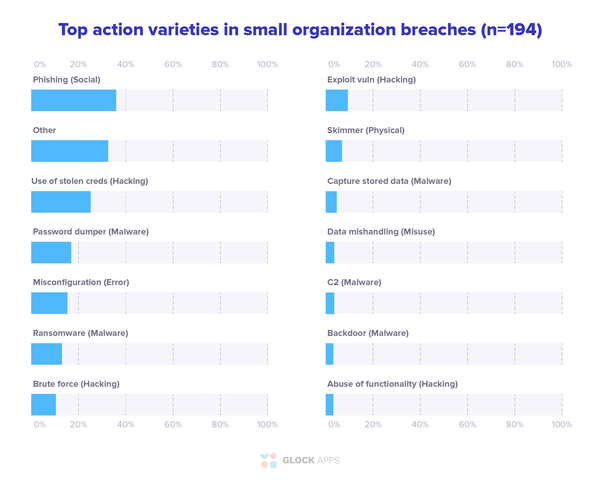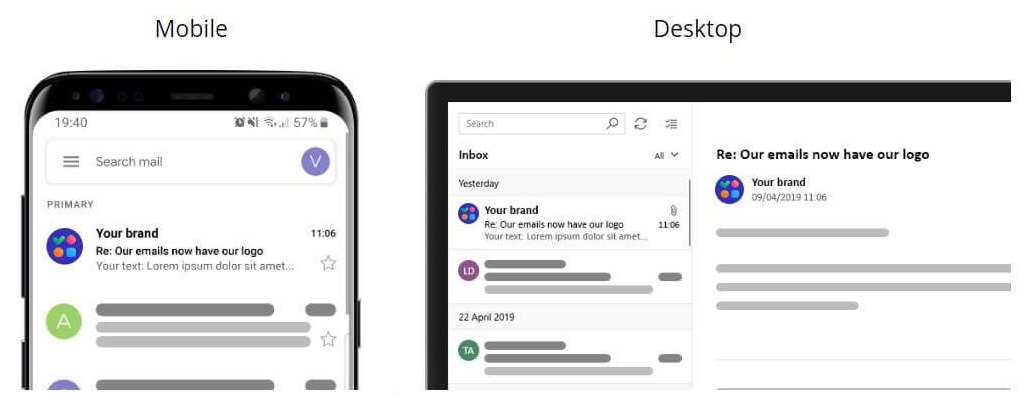Why Every Business Needs DMARC

Cyber threats in 2021 have reached shocking heights. There are numerous new phishing emails related to COVID-19. According to Verizon, 94% of malware is delivered by email, and remote working makes companies more vulnerable to security breaches than ever before.
Knowing such statistics one could wonder why so many companies have not improved their email security with DMARC? Yet, according to dmarc.org only 23.5% of those who even implemented it, have reached a ‘reject’ policy. With GlockApps DMARC report analyzer you can create a DMARC record in less than 5 minutes and start moving towards the ultimate security right away.

What is DMARC?
DMARC stands for Domain-based Message Authentication, Reporting & Conformance. It becomes your ultimate layer of email protection, after SPF and DKIM. In layman’s terms during email authentication first mail server checks SPF and DKIM authentication, and then DMARC runs alignment of those two protocols. According to the policy type (none, quarantine or reject), DMARC decides on what to do with every email, whether to let it to the inbox, quarantine it or reject it entirely.
Read also: What is DMARC: Email Security with DMARC, SPF, and DKIM

Business Size Doesn’t Matter
There is one myth about online scammers. It is widely believed that only large businesses, major corporations, and governments fall victim to email spoofing and phishing. And it feels logical because that’s where the money is. However, statistics tell us otherwise:
- 43% of SMBs don’t have any protection plans when it comes to cybersecurity;
- In 2019 28% of the breaches were Small Businesses;
- For more than 30% of small businesses, phishing is a top threat.

Verizon’s 2020 Data Breach Investigations Report
Among the most common reasons why small and medium businesses don’t take care of their email security is a lack of resources – finances, personnel, time, etc. And the wrong belief that attackers would target larger goals.
So, in this light, corporations and larger businesses must have DMARC in place and run on the ‘reject’ policy? Unfortunately no. According to the Agari report, among Fortune 500 only 33% have a DMARC record, and only 8% have activated it.
How so? Mostly because large corporations have numerous email streams, subdomains, and third-party organizations involved in the email-sending process. One mistake in a record could lead to a massive breakdown and the intricacies of implementing higher levels of DMARC security (‘quarantine’ and ‘reject’ policies) could lead to blocking legitimate emails. And such interruption of important email communication could lead to financial and reputational losses.
Read also: DMARC Adoption in 2023: What’s the Problem?
What Benefits Does DMARC Have
Whatever the size of your business – DMARC provides universal benefits for all.
- Full visibility. When you implement a DMARC record, it will send you reports with all the traffic happening on your domain. If there are any unsolicited email senders – you will easily detect them.
- Control. With the DMARC reporting system, you get full control over the email sending sources. You can handle authentication issues when they appear with legitimate senders, and block unauthorized emails.
- Security. That’s what DMARC was created for. Just instruct what you want to be done with suspicious emails and any unauthenticated message will be quarantined or rejected.
- Deliverability. Does the DMARC record improve deliverability? Although not created to help your email get into the inbox, it actually does so. Receiving servers, especially those of large mailbox providers are very thorough as to what emails their users receive. Being authenticated with DMARC makes you a legitimate sender in the eyes of the ISPs.
As you may see, the benefits of DMARC implementation are hard to dismiss. Both SPF and DKIM have their vulnerabilities and downsides. Using DMARC on top of these two protocols will strengthen your domain defenses, making sure no malicious actor sends email on your behalf.
Future Security Trends
In 2023 we can clearly see a couple of new trends when it comes to email security. How does DMARC relate to them?
BIMI Adoption.
BIMI stands for Brand Indicators for Message Identification. This standard allows your email to stand out in the inbox of your recipients by adding a brand logo to your message. With BIMI you can easily increase brand awareness, trust and security. And what has DMARC to do with BIMI? Well, you need DMARC record to be implemented and have it on a ‘quarantine’ or ‘reject’ policy to be able to use BIMI. So if you want to benefit from new email possibilities – you need to authenticate properly.

BIMI standard helps raise brand awareness and security.
According to the latest news, BIMI has been adopted by Yahoo!, AOL, Netscape, FastMail, and Google. So if your clients use any of these mailbox providers, you can already benefit from using BIMI.
Learn More About BIMI: What is BIMI: Ultimate Guide to BIMI in 2023
No Auth, No Entry.
Have you heard this one before? What it means is no authentication – no entrance in the inbox. Not yet a mandatory rule, but many mailbox providers, especially large ones, are leaning towards this simple rule. ISPs strive to bring a high-quality experience to their clients. And with the ever-growing amount of scammers and phishers, it is highly preferable for incoming messages to authenticate properly. Implementing DMARC is proof of you being a legitimate sender.
Recap
With the ever-growing cyber-criminal activity, it seems only logical to secure your email streams from being used for fraud. Unfortunately, the DMARC protocol implementation is far from perfect in both small and medium businesses and large corporations.
Implementing DMARC record has benefits regardless of the size of a business. It provides full domain visibility, control over email traffic, and security from phishers and spoofers. Moreover, DMARC is known to improve deliverability, since mailbox providers can confirm that you are a legitimate sender if your emails authenticate properly.
DMARC also needs to be implemented if you want to stay up to date and proactive. In 2021 BIMI protocol is being actively adopted by the largest mailbox providers like AOL, Yahoo!, etc. By implementing BIMI you get to stand out in the inbox with your authenticated brand logo. And to use BIMI you need to have DMARC with policy ‘quarantine’ or ‘reject’.
All in all, there are obstacles to DMARC record implementation, but every business, large or small, needs to continually improve its email security. With GlockApps DMARC Analyzer you can start receiving exhaustive reports in the easy-to-read form every 24 hours and get notifications if any suspicious activity will happen on your domain.
You can use DMARC Analytics for free with 10,000 messages every month in your account.
Learn More About DMARC Reporting:
DMARC Report Analyzer- Improve Email Deliverability
How to Protect Sender Domain with DMARC: Using DMARC Enforcement
DMARC Fail: What Causes DMARC Failure?



